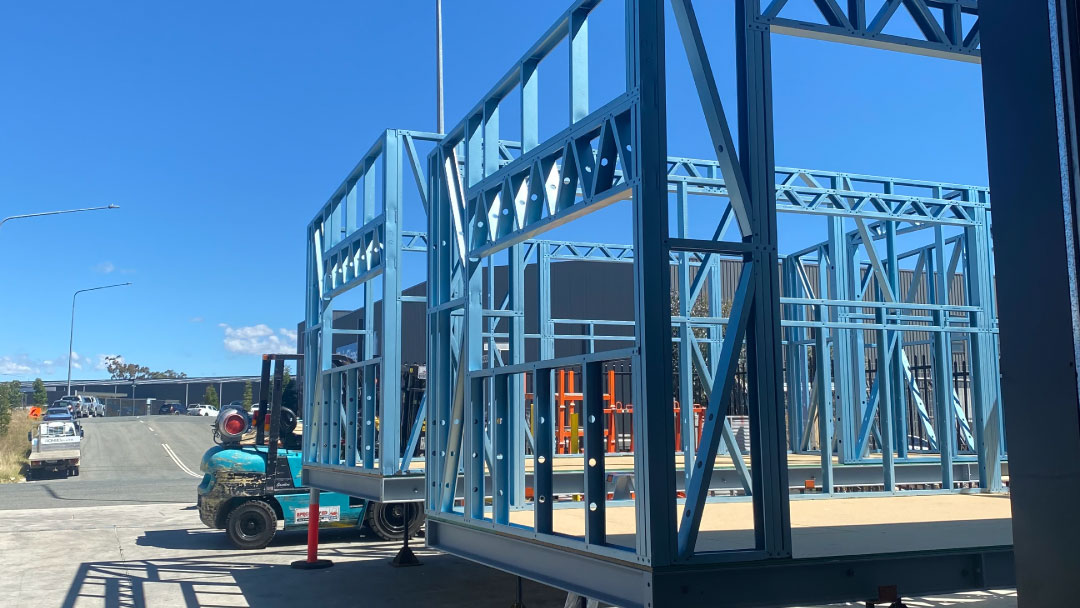In the real estate sector, there is a strong drift toward constructing infrastructures away from the construction site — modular construction. Modular construction in Australia is in a booming crusade and recently with the complexity rendered by the pandemic, building home office pods through modular construction is at its peak.
If you are planning to have your home office pod, HopMod will give you everything that you need to know. Finish this blog and take a full grasp of why modular construction in Australia is rising!
Everything You Need to Know About Modular Construction in Australia
Modular construction is a form of prefabricated construction in which a significant component of the construction process occurs off-site. It would be more accurate to think of it as a method of manufacture rather than as a specific product category in and of itself. Prefabricated construction technologies, whether for large or small modular construction projects, single-story or multi-story, can provide distinct advantages over traditional construction methods in a variety of situations.
Now, you might be asking, how is modular construction done?
A factory-built home begins as a series of parts that have been constructed in a climate-controlled environment. Because each building part is created to fit perfectly with the next, modular construction methods are frequently compared to constructing with blocks — just imagine building with Lego blocks.
Building configuration, square footage requirements, and site layout all influence the length of a modular building’s modules. Each module is staged in a set order to ensure that the final assembly is as efficient as possible and then assembled with cranes on the construction site after it has been carried there. While module construction is taking place at the production facility, preparation work is being carried out on the construction site. Excavation, grading, foundation work, and utility installation are what are done in this phase. Consequently, a high-quality product is produced in a safe and stable working environment.
Modular construction in Australia ultimately prioritizes efficiency, long-term durability, and quality control. Furthermore, once a modular home has been placed and secured to its foundations, it is impossible to shift the structure.
Benefits of Modular Construction
-
Time-efficient
Modular construction takes much less time to complete than traditional construction; this includes time on the job site and preparation time. Module manufacturing can begin before to completion of on-site preparations such as foundations, hence expediting the entire construction process. Modular construction enables the construction of individual components of a building concurrently, thus lowering the time required to finish a project. When a building is authorized and certified, easily available building components can be supplied or constructed on-demand.
The entire structure is then sent in sections directly to the construction site, where assembly commences. Following site preparation, the modular components are installed. This process normally takes between one to three months. Additionally, construction can be prolonged 24/7 if necessary to complete a project. This time-saving benefit helps keep the project on track and expedites construction while remaining efficient.
-
Cost-efficient
Modular building Sydney reduces the cost of construction procedures while also increasing the predictability of construction costs. There are numerous advantages to prefabricating structures, including increased transparency, improved cost efficiency, centralization of labor and a decreased labor force, and less time spent by a general contractor supervising a large number of subcontractors. Furthermore, material supplies are easier to monitor in a manufacturing setting, resulting in less waste and, thus, reduced costs, as well as a reduction in the environmental effect of a construction project.
-
Customizable
First and foremost, modular construction allows for a great deal of flexibility in terms of design and customisation. Modular buildings are extremely useful, adaptable, and versatile, enabling the creation of a one-of-a-kind structure without sacrificing quality or cost-effectiveness in the process. Building modular structures allows clients, builders, and designers to collaborate to guarantee that construction projects fulfill specific aesthetic and functional requirements. Custom modular buildings Sydney is distinguished by their distinctive layouts, exterior and interior finishes, and other distinctive architectural features.
-
Sustainable Process of Construction
Using off-site modular building techniques, environmentally friendly and recyclable materials can be utilised in the construction process. In light of the growing environmental concerns in the construction industry, modular methods are becoming more popular as a way to reduce the amount of waste generated by each project. There are also efforts to maximize recycling within the companies that assemble the various components of the buildings. Waste is reduced and energy efficiency is improved as a result of the specialized and controlled environment created for the construction of prefabricated structures.
-
Weather and on-site issues aren’t a problem.
Construction delays caused by inclement weather and other sites concerns are not an issue with modular construction, it eliminates a significant number of possible delays to project completion times. Furthermore, by producing the modules in a controlled environment, numerous possible delays to project completion dates are avoided. It also gives workers with safer and more comfortable working environments, allowing them to be more productive and deliver a higher-quality product.
-
Enhance Quality
Factory settings provide a higher-quality product through improved operating processes and monitoring, while also providing a more comfortable work environment for staff. Modular structures and modular units are constructed using materials that are stored in a controlled environment and submitted to inspection and quality control processes more quickly. During traditional construction, materials are frequently stored on-site and exposed to elements such as rain, sun, humidity, poor air quality, and temperature variations, all of which can have a detrimental effect on the building’s materials and integrity. Qualified and knowledgeable quality control personnel can promptly verify centralized and internally stored modular construction components prior to their usage; something that is less likely done in traditional construction
Have Your Own Experience of Modular Construction in Australia with Us!
HopMod will provide you excellent service of modular construction in Australia. May it be a home office pod or any building, you can trust our service!
If you see comfort and a secured future with modular construction Australia, send us a message today and we will discuss your modular construction needs!


Recent Comments